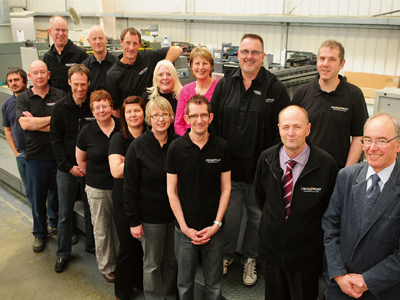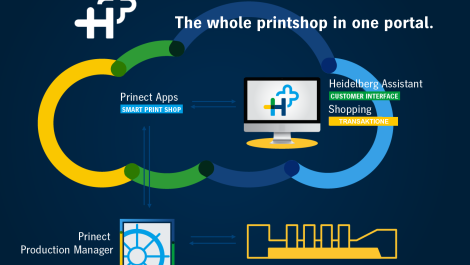Bespoke development and integration with web ordering and workflow systems will help Crossprint realise significant time and cost savings through its Imprint MIS.
The paperless office has long been predicted but seems as unlikely as ever; Crossprint, however, the Isle of Wight print business run by Tim Sell, is working towards a paperless production system with the help of its Imprint MIS.
The MIS, which incorporates Expert Estimating, production control, order processing, stock and finished stock control, shop floor data capture and remote access, was installed in 2011, after Mr Sell met with Imprint at Ipex 2010. The company had outgrown the previous management information system and was therefore looking at the options.
‘I was bowled over by what Imprint could do,’ Mr Sell recalled. ‘It’s not just a system to estimate for print, but actually a manufacturing system that could adapt, I would think, to any type of manufacturing. It is so flexible. The ease of being able to produce an estimate was what I really liked from that first demo.’
It took around three years before he felt Crossprint was really getting the most out of the Imprint software, as it found its way around the system and worked out how it wanted to use it. It has also found aspects within the system that can be switched on – aspects that Imprint, it seems, does not go out of its way to promote. The paperless production referred to earlier is a case in point. Estimates now go into the system and automatically into production, appearing on the electronic production board screens in the factory and offices. Data is fed automatically into the studio workflow.
Mr Sell continued: ‘It’s all on Imprint; you’ve just got to get them to switch it on. The production board drives all the paperwork throughout the system. Staff can see their job bags and what they have to do on screen. The real benefit for the company is that the system is adaptable; we can make it do things that others cannot. We can control production so its running second by second and everyone can see exactly what everyone else is doing and what’s happening at any given time.
‘That saves us money. A traditional job bag journey with all the paperwork takes 40 minutes. If you’re doing 300 jobs a month, that’s a lot of minutes. It is increasing efficiency in the operation, and I can also access it from anywhere in the world.’
Crossprint has built its own web to print system and this integrates directly into the MIS. It is in the process of putting in a new workflow too – FFEI’s RealPro – and this will also be integrated with Imprint. The flexibility of the MIS has been proven with some bespoke development for Crossprint, which came about after a visit to drupa, where Mr Sell attended a seminar in which it was explained that when given three prices, a top, middle and bottom, it is human nature for people to go for the middle one, not wanting to be seen as too cheap or too expensive.
‘We operate our profit margins to reflect that,’ he went on. ‘Everyone goes for the middle price, so we were able to build that into the system; the mark-up profiles change according to the value in the middle. Imprint built that in for us, and this is where the system really comes into its own.’
Shop floor data from the company’s litho presses is gathered by operators scanning bar codes, while the Ricoh digital press also feeds information to the MIS. Everyone in the organisation can get an instant and real-time update on production progress and capacity by looking at the electronic production board. If there are gaps, sales personnel can react to fill them.
‘It’s an ongoing, living part of our business,’ Mr Sell said. ‘I’m looking at it every five minutes, thinking this or that could be done better. It’s the type of tool that gets you to think about what you want to do next with it. There has been a huge saving in time right across the factory. I’m instantly fed back how well our company is doing every 15 seconds. It’s invaluable. If my presses are full I know I’m making money and as a director that’s what you have got to know. If I have got lots of holes there might be a reason for it and I can ask the question.’





